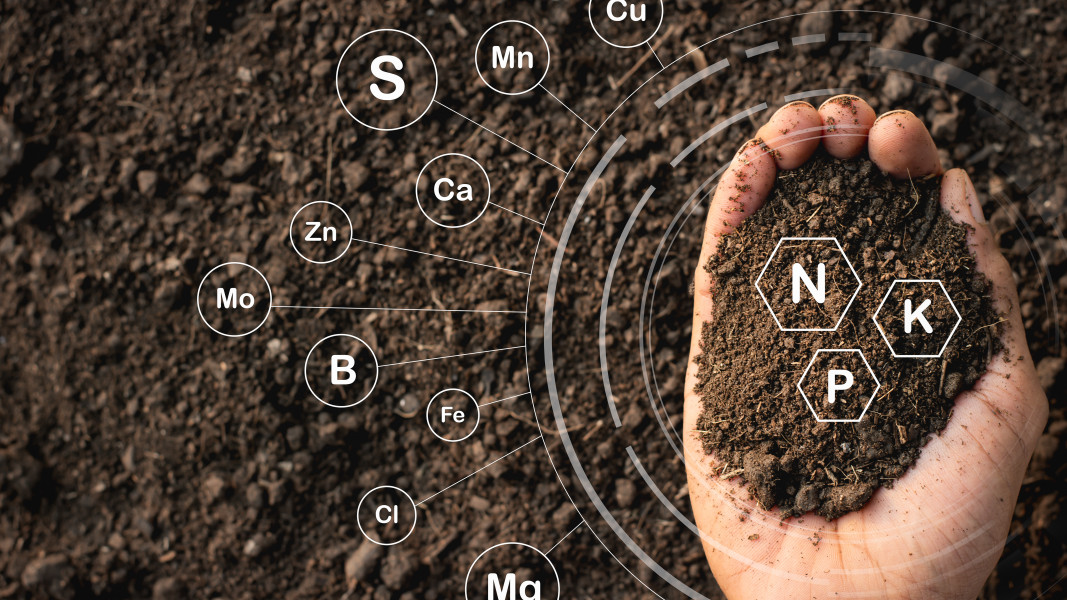Signs of poor soil
How to effectively improve the structure of the soil in your own garden should be well understood. Determine whether the substrate needs additional nutrients, simply - for this, carefully check the composition of the soil. If it turns pale in color, the soil is deficient in nutrients. Brown soil is a clear indicator that the substrate's humus content has to be increased. Provide a sample of soil for laboratory analysis when it is required to treat this matter more seriously.
It is thought that when the soil in the garden turns white, it indicates that there is too much carbonate in the soil. This can be verified in the following manner: A soil lump should be treated with a few drops of strong hydrochloric acid. Your assumptions are proven true if a reaction takes place and the liquid starts to boil.
It is crucial to focus on the kind of soil while trying to spot indications of poor soil composition. Make a lump of earth out of a small amount of the material in your hand, and then test to see if it crumbles. Its disintegration indicates that your garden's soil is sandy. In contrast, clay.
Not to be overlooked, though, are the middle ground options: clay and sand. It is important to keep in mind that sand-based substrates absorb moisture well and reasonably rapidly, but they also release it instantly. In any event, it is only necessary to enhance the soil's structure.
Change in soil structure
Gardeners with experience know how to increase soil fertility in their own garden plots rapidly. The first rule is sensible, well-considered agricultural technology, particularly when it comes to mass plant cultivation. Mineral salts, nutrients, and trace elements eventually vanish from the soil over time even under this situation. The substrate's salt composition is also being dramatically changed at the same time. This is an essential sign that the soil's structure needs to be changed. The characteristics of this procedure's application vary depending on the kind of soil and are carried out in a variety of ways.
You should thin any thick clay soil in your garden using sand and fine expanded clay. It is advised to add humus and clay to the soil when growing greens and vegetables in deficient sandy clays. Remember the organic matter in both situations since it provides any substrate with nutrients.
How to enrich poor soils?
Most gardeners and lovers of beautiful flowers and home vegetables have encountered the heavy, clay soil that sticks in the rain, and then when the sun shines, it crumbles like a rock...
The heavy clay soil drains slowly and stays soaked with water long after the rains have stopped! Then, when the water drains anyway, the clay soil hardens and forms a crust that is very difficult for plants to break through! This is a problem, especially in the spring when it often rains.
The good news is that generally clay soils are richer in nutrients than sandy and friable soils. Also, the property of clay soils to retain water can be used as an advantage rather than a disadvantage.
Here are some tips on how to improve clay soils so that they become easier to work and grow our favorite plants:
Useful materials:
- Soil test
- Soil conditioner
- A garden cart
- The shovel
- An oar
- Cover crop (cereals, clover, forage peas, legumes)
Check the acidity of the soil!
Clay soils are rich in nutrients, but if the soil is acidic or too alkaline, the nutrients will be difficult for plants to absorb. For most gardeners, a pH between 6.3 and 6.8 is ideal. There are many additives that you can use to correct soil acidity.
Add organic matter
Adding organic matter improves drainage and lightens heavy soils. There are soil mixes that, in addition to improving drainage and structure, also offer a boost to the nutritional capabilities of clay soils. They provide additional nutrients for soil microorganisms, which in turn also improve soils. Before spring planting a variety of plants, add a soil conditioner, manure or other nutrient-rich fertilizer. A new layer of 2-4 inches will enrich your soil and charge it with new forces to feed the plants! During the gardening season (spring-summer-autumn) periodically add organic matter to maintain a good level of nutrients. Soil microorganisms are constantly fed by the soil and they need this food!
Form raised beds
Because of the poor drainage properties of clay soils, consider creating raised beds that will drain easily and not have a problem with soil structure. For the formation of the beds, you can use peat, compost soil mix or other. Form the beds using logs, bricks, stones or other. Consider the size of the beds so that you have access to the innermost areas.
Cover garden beds with organic mulch in winter
Torrential rains and heavy snows contribute to the compaction of clay soils, and covering the beds with organic matter will prevent this from happening. Use straw, sawdust, or ready-made mulch that you can buy from garden centers. Mulching will keep the soil from compacting and reduce erosion. Additionally, mulching stops weeds from growing!
Sow a cover crop between growing seasons
Cover crops are a living soil conditioner! And different cover crops supply the necessary elements to different soils. In colder regions, cereal crops are preferred. In warmer climates, clovers and legumes are better choices. Two months before the start of the gardening season, sow a cover crop to pre-nourish the soil.
Additional tips
Soil improvement takes time, so don't expect instant results. The methods described above are steps to a rich, structural and nutritious soil that will slowly enrich your soil and in just a few years, you will have an enviable foundation on which to grow a bountiful harvest!
Add soil conditioner, organic matter and mulch at any time and allow 2-3 weeks for digestion if adding cover crop, straw or organic waste.
Feed the soil so you can have a healthy and beautiful garden!

